
Journal of Spectroscopy
Scope & Guideline
Pioneering Research in the World of Spectroscopy
Introduction
Aims and Scopes
- Spectroscopic Characterization of Materials:
The journal publishes studies that employ various spectroscopic techniques to analyze the molecular and structural characteristics of materials, including organic and inorganic compounds, gemstones, and biological samples. - Analytical Applications in Environmental and Health Sciences:
Research articles often focus on the application of spectroscopy in environmental monitoring, food safety, and healthcare, emphasizing its role in detecting contaminants, assessing quality, and understanding biological processes. - Innovative Methodologies and Instrumentation:
The journal highlights advancements in spectroscopic methods and instrumentation, including novel detection devices, data analysis techniques, and hybrid methodologies that enhance the capabilities of traditional spectroscopic approaches. - Computational and Theoretical Spectroscopy:
There is a consistent emphasis on the integration of computational methods with experimental spectroscopy, allowing for a deeper understanding of molecular interactions and dynamics. - Interdisciplinary Approaches:
The journal encourages interdisciplinary research that combines spectroscopy with fields such as materials science, chemistry, biology, and engineering, fostering collaborations that lead to innovative applications.
Trending and Emerging
- Machine Learning and Data Science Integration:
The application of machine learning algorithms in analyzing spectroscopic data is on the rise, reflecting a trend towards utilizing advanced computational techniques for enhanced data interpretation and predictive modeling. - Spectroscopy in Medical and Clinical Applications:
An increasing number of studies are exploring the use of spectroscopy in clinical settings, particularly for diagnostic purposes, treatment monitoring, and understanding disease mechanisms. - Environmental Monitoring and Sustainability:
Research focusing on the application of spectroscopy for environmental assessment, including soil and water quality monitoring, is gaining momentum as sustainability becomes a critical global concern. - Hybrid Spectroscopic Techniques:
The development and application of hybrid techniques that combine multiple spectroscopic methods (e.g., Raman, NIR, UV-Vis) are emerging, enabling more comprehensive analyses and greater sensitivity. - Nanotechnology and Materials Science Applications:
There is a growing trend towards the use of spectroscopy in the characterization of nanomaterials and their applications in various fields, including catalysis, drug delivery, and energy storage.
Declining or Waning
- Traditional Spectroscopy Techniques:
There seems to be a waning interest in classical spectroscopy methods without the integration of advanced technologies or computational approaches, as newer hybrid techniques gain traction. - Basic Spectroscopic Studies on Common Compounds:
Research focusing solely on the spectroscopic analysis of widely studied compounds without novel applications or innovative methodologies has decreased, possibly due to saturation in this area. - Single-Method Studies:
There is a noticeable decline in studies that utilize a single spectroscopic technique without incorporating complementary methods, as interdisciplinary and multimodal approaches are becoming more favored.
Similar Journals

APPLIED SPECTROSCOPY
Transforming Knowledge into Practical ApplicationsApplied Spectroscopy, published by SAGE Publications Inc, is a leading journal in the field of spectroscopy and instrumentation, with a legacy dating back to 1970. This esteemed journal, recognized within the Q2 category for both Instrumentation and Spectroscopy in 2023, provides critical insights and advancements that cater to a wide audience of researchers, professionals, and students. With its Scopus rankings placing it in the top 20% of publications in its respective fields, Applied Spectroscopy stands out for its rigorous peer-reviewed content that drives innovation in analytical techniques and applications. Though not an open-access publication, readers can access a wealth of research articles, reviews, and experimental findings that enrich the scientific discourse in spectroscopy. With a focus on enhancing the understanding and practical applications of spectroscopy, this journal is an essential resource for anyone engaged in this dynamic and evolving discipline.

SPECTROSCOPY AND SPECTRAL ANALYSIS
Empowering Researchers with Spectral KnowledgeSPECTROSCOPY AND SPECTRAL ANALYSIS is a pivotal journal published by the OFFICE SPECTROSCOPY & SPECTRAL ANALYSIS in China, dedicated to advancing the field of spectroscopy and its associated techniques. With an ISSN of 1000-0593, this journal provides a platform for researchers, professionals, and students to disseminate innovative studies and findings related to spectroscopy, covering various applications from fundamental research to technological advancements. Although it currently stands in the Q4 quartile for both Instrumentation and Spectroscopy as per the 2023 categorization, it continues to play a crucial role in fostering dialogue and collaboration within the scientific community. The journal features contributions that explore the latest methodologies and applications, making it a valuable resource for those aiming to deepen their understanding and application of spectroscopic techniques. It operates within a competitive landscape, ranked at the 16th percentile in Chemistry (Spectroscopy) and 15th percentile in Physics and Astronomy (Instrumentation), which underscores its targeted influence in these fields. Interested readers can access the journal to stay informed about pioneering research, helping to bridge the gap between theoretical insights and practical applications.
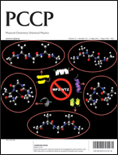
PHYSICAL CHEMISTRY CHEMICAL PHYSICS
Catalyzing Innovation in Physical Chemistry and Chemical PhysicsPhysical Chemistry Chemical Physics is a premier interdisciplinary journal published by the Royal Society of Chemistry, dedicated to advancing the fields of physical chemistry and chemical physics. With an impressive impact factor and categorized in the Q2 quartiles for both Physical and Theoretical Chemistry and Physics and Astronomy, this journal serves as a vital platform for the dissemination of high-quality research findings from 1999 through 2024. Based in the United Kingdom, the journal is committed to providing open access to its articles, enhancing the visibility and accessibility of research to a global audience. Researchers, professionals, and students alike are encouraged to contribute to this esteemed journal, ensuring impactful discussions and significant advancements in the understanding of chemical and physical phenomena. With strong Scopus rankings underscoring its relevance, Physical Chemistry Chemical Physics stands out as an essential resource for specialists striving to innovate and excel within these dynamic fields.
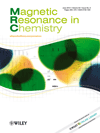
MAGNETIC RESONANCE IN CHEMISTRY
Navigating the Complexities of Magnetic Resonance in ChemistryMAGNETIC RESONANCE IN CHEMISTRY, published by Wiley, is a prominent journal dedicated to the advancement of knowledge in the field of magnetic resonance as applied to chemistry and materials science. With an ISSN of 0749-1581 and an E-ISSN of 1097-458X, this journal has been an essential resource for researchers since its inception in 1985, maintaining its reputation as a leading publication through its converged years up to 2024. Spanning diverse topics, the journal holds a Q2 quartile ranking in both the Chemistry (miscellaneous) and Materials Science (miscellaneous) categories, illustrating its significance in the academic community. With Scopus rankings placing it in the 61st percentile for General Chemistry and the 55th percentile for General Materials Science, this journal is an esteemed platform for original research, reviews, and critical discussions surrounding magnetic resonance methodologies and applications. As access options are not open, it ensures a curated dissemination of high-quality, peer-reviewed content to support professionals, researchers, and students in their scholarly endeavors.

SPECTROCHIMICA ACTA PART A-MOLECULAR AND BIOMOLECULAR SPECTROSCOPY
Empowering researchers with cutting-edge spectroscopic insights.SPECTROCHIMICA ACTA PART A-MOLECULAR AND BIOMOLECULAR SPECTROSCOPY, published by PERGAMON-ELSEVIER SCIENCE LTD, stands as a pivotal resource in the fields of molecular and biomolecular spectroscopy, providing a platform for researchers to disseminate significant findings from both analytical chemistry and molecular physics. With an impactful presence reflected in its Q2 rankings across several categories, including Analytical Chemistry and Spectroscopy, this journal aims to foster advancements in the understanding of molecular interactions through innovative spectroscopic techniques and methodologies. Despite not providing open access, its authoritative articles are crucial for professionals seeking to stay at the forefront of research and development in the discipline. The journal also showcases an impressive pedigree, ranked in the top tiers of Scopus indicators, including high percentiles in both Chemistry and Physics domains. With coverage expanding from 1995 to 2025, SPECTROCHIMICA ACTA PART A remains an essential reading for anyone dedicated to the evolution of spectroscopic science.
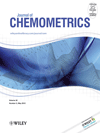
JOURNAL OF CHEMOMETRICS
Bridging Chemistry and Mathematics for Enhanced UnderstandingJOURNAL OF CHEMOMETRICS is a prestigious journal published by Wiley that has been a cornerstone in the fields of analytical chemistry and applied mathematics since its inception in 1992. With an ISSN of 0886-9383 and an E-ISSN of 1099-128X, this journal occupies a notable position, reflected in its Scopus rankings where it holds the 90th rank in Applied Mathematics and the 56th rank in Analytical Chemistry. The journal, based in the United Kingdom, spans a converged publication timeline through 2024, meticulously exploring the interplay between chemical data analysis and mathematical methodologies. Though currently not open access, it offers essential insights through high-quality research articles that significantly contribute to advancing the understanding of chemometric techniques and their applications. With an impact factor demonstrating robust academic recognition, the JOURNAL OF CHEMOMETRICS serves as an invaluable resource for researchers, professionals, and students aiming to excel in the ever-evolving landscape of chemical data interpretation.
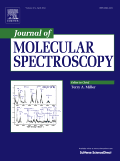
JOURNAL OF MOLECULAR SPECTROSCOPY
Pioneering Insights in Spectroscopy Since 1957JOURNAL OF MOLECULAR SPECTROSCOPY, published by Academic Press Inc Elsevier Science, serves as a pivotal platform in the fields of Atomic and Molecular Physics, Physical and Theoretical Chemistry, and Spectroscopy. With its inaugural issue dating back to 1957, this journal has maintained a rich history of disseminating significant research findings, contributing to an understanding of molecular behavior and interactions through various spectroscopic techniques. Although currently positioned in the Q3 quartile across its respective categories as per 2023 rankings, the journal aims to enhance its stature further by promoting rigorous and impactful studies that push the boundaries of knowledge in spectroscopy. While access to this publication is not open, the rigorous peer-review process ensures that the articles published maintain high standards of scientific excellence, appealing to researchers, professionals, and students seeking comprehensive insights into molecular spectroscopy. The journal's ISSN is 0022-2852 and its E-ISSN is 1096-083X.
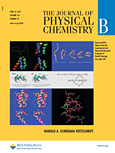
JOURNAL OF PHYSICAL CHEMISTRY B
Exploring Interdisciplinary Applications of ChemistryJournal of Physical Chemistry B, published by the American Chemical Society, is a leading international platform dedicated to advancing our understanding of physical chemistry and its applications in various interdisciplinary fields. With an impressive 2023 Impact Factor, and categorized in Q1 for Physical and Theoretical Chemistry as well as Surfaces, Coatings and Films, this journal showcases cutting-edge research that contributes significantly to materials science, supporting the innovative development of new materials and technologies. The journal, established in 1997 and converging its years of publication to 2024, maintains rigorous peer-review standards and is accessible to a global audience, enabling the dissemination of pivotal research findings. Moreover, it is renowned for its comprehensive coverage in the realms of materials chemistry and miscellaneous medical applications, making it a vital resource for researchers, professionals, and students alike in their pursuit of excellence in scientific inquiry.

Physical Chemistry Research
Connecting researchers to innovate in physical chemistry.Physical Chemistry Research, published by the Iranian Chemical Society, is an esteemed academic journal dedicated to advancing knowledge within the fields of *Fluid Flow and Transfer Processes*, *Physical and Theoretical Chemistry*, and *Statistical and Nonlinear Physics*. Since its inception in 2013, the journal has established a crucial platform for researchers, professionals, and students to share innovative findings and methodologies, enhancing collaboration and knowledge dissemination in the physical chemistry community. With impactful contributions recognized in Quartile 3 and Quartile 4 classifications across various categories, the journal is positioned to cultivate emerging research trends as it continues to converge through 2024. Researchers can benefit from diverse perspectives on crucial phenomena in physical chemistry, as the journal is indexed in prominent databases, further increasing accessibility and visibility. The *open access* policy ensures that cutting-edge research remains available to a broad audience, promoting the growth of the discipline globally.

Molbank
Connecting Scholars through Molecular DiscoveriesMolbank is an open-access journal published by MDPI, dedicated to the fields of Biochemistry, Organic Chemistry, and Physical and Theoretical Chemistry. Established in 2002, this journal has served as a vital platform for the dissemination of research findings, where researchers and professionals share original articles focusing on molecular chemistry, synthesis, and related studies. With a commitment to open access, Molbank enables global access to scientific knowledge, fostering collaboration and innovation among scientists. While currently categorized in the fourth quartile for its field rankings, it provides a unique opportunity for emerging scholars to contribute to and engage with the scientific community. The journal is based in Switzerland, operating from its office at ST ALBAN-ANLAGE 66, CH-4052 BASEL, SWITZERLAND, and continues to attract submissions until 2024. Researchers, students, and professionals looking to expand their knowledge and participate in the dialogue of current molecular chemistry can benefit significantly from engaging with the content published in Molbank.